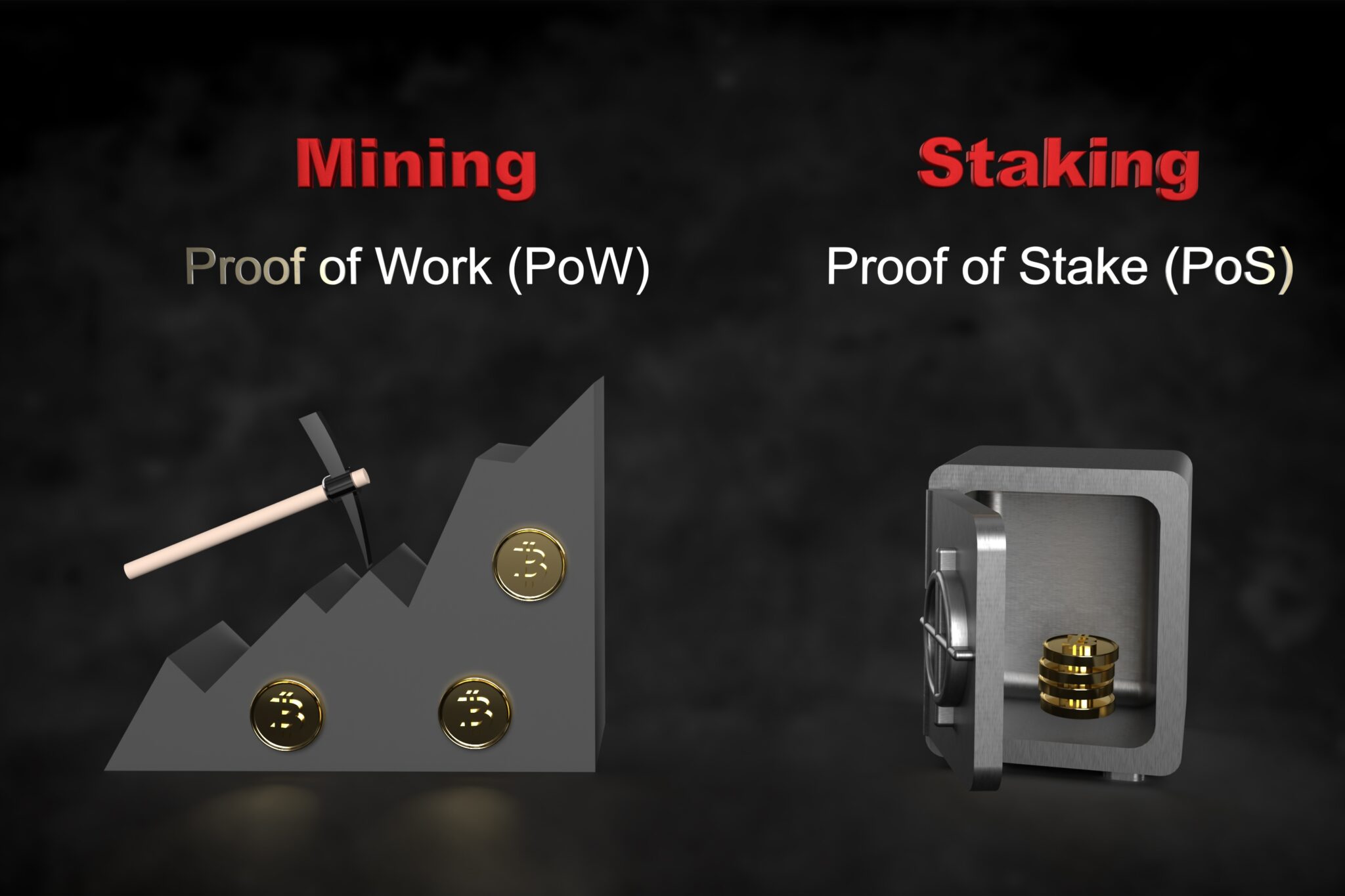Proof of Work VS Proof of Stake | Decentralized digital assets on blockchain technology have transformed the financial world through cryptocurrencies. Among the prominent consensus mechanisms utilized by cryptocurrencies, we find proof of work (PoW) and proof of stake (PoS).

Distinguishing Proof of Work from Proof of Stake
Proof of work serves as the foundational algorithm for Bitcoin, the pioneering cryptocurrency. Miners compete to solve intricate mathematical puzzles to validate transactions and append them to the blockchain. The process demands substantial computational power, leading to the miner who succeeds in solving the puzzle being rewarded with newly minted coins.
Key Traits of Proof of Work

Security
The PoW system ensures a high level of security for blockchain networks as solving the puzzles necessitates significant computational effort, deterring malicious attacks.
Decentralization
PoW promotes decentralization by allowing anyone with adequate hardware and electricity to participate in mining, preventing power concentration in the hands of a few entities.
Longevity
Bitcoin’s enduring success with PoW attests to the mechanism’s longevity and effectiveness, as it has withstood various challenges over time.
Challenges of Proof of Work
Energy Consumption
Critics highlight PoW’s energy-intensive nature, which raises environmental and sustainability concerns due to the considerable computational power required for mining.
Centralization of Mining Power
Mining has evolved to become more centralized and specialized, with large mining pools dominating the network. This raises the risk of centralization.
An Exploration of Proof of Stake (PoS)

Proof of stake offers an alternative consensus mechanism designed to address PoW’s challenges.
In PoS, validators are chosen to create new blocks and validate transactions based on the number of coins they hold and “stake” as collateral.
Key Traits of Proof of Stake
Energy Efficiency
PoS is more energy-efficient compared to PoW since it eliminates the need for computationally intensive puzzles. Validators are selected based on their stake, reducing overall energy consumption.
Scalability
PoS has the potential to enhance scalability, facilitating faster transaction validation, higher throughput, and increased network efficiency.
Security Measures
PoS introduces mechanisms like “slashing” to penalize malicious behavior, offering incentives for validators to act honestly and maintain network integrity.
Challenges of Proof of Stake

Initial Distribution of Coins
Fairly distributing coins during the initial stages is a crucial challenge for PoS to avoid centralization risks and power concentration.
Nothing at Stake Problem
Theoretical concerns about validators creating multiple forks or conflicting blocks without consequences require careful implementation to mitigate risks.
Ethereum: Transitioning from PoW to PoS
Ethereum, the second-largest cryptocurrency, is presently transitioning from PoW to PoS with Ethereum 2.0. This upgrade aims to enhance scalability, security, and sustainability.
<Ethereum Vs Bitcoin – Which one is more worth investing in?>
Ethereum Proof of Stake vs. Proof of Work

Energy Efficiency
Ethereum’s shift to PoS is expected to significantly reduce energy consumption, addressing environmental concerns related to mining.
Scalability
Ethereum 2.0’s move to PoS aims to improve scalability, allowing for more transactions per second and enhancing network efficiency.
Security and Decentralization
While PoS introduces new security measures, concerns about centralization persist, but the Ethereum community works to ensure a fair and decentralized network.
In Conclusion
Understanding the nuances of PoW and PoS is vital for cryptocurrency investors, developers, and enthusiasts as the landscape evolves. The transition of Ethereum to PoS marks a significant development toward a sustainable and scalable future. Providing valuable and informative content with relevant keywords is crucial for successful search engine optimization (SEO) in this field.



